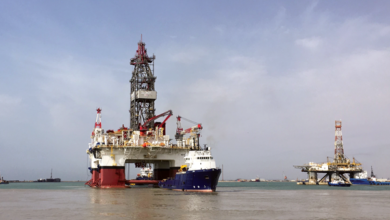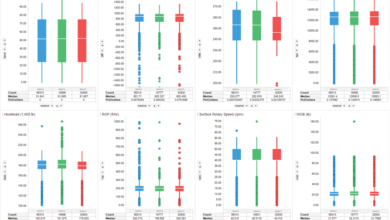Traditional line-by-line analysis may not account for design, procedural changes that enhance efficiency and HSE when comparing different rig designs
By Precious Nwokoma and Xander Knobben, Huisman Equipment
The drill well on paper (DWOP) exercise is an accepted tool for use in planning an offshore well and in post-drilling analyses. However, given accelerated advances in drilling systems and operational practices, does the DWOP methodology of strictly analyzing fixed line-item data adequately capture non-apparent flat time?
This article explores areas where the traditional DWOP may not clearly reflect the efficiencies and HSE gains intrinsic of the latest-generation drilling environment. It also makes the case for taking more of a project management-like approach to conducting the rig-comparison DWOP.
Method of Analysis
In a rig-comparison DWOP, key operational criteria are clearly defined prior to initiating the analysis. These criteria have an impact on the procedures adopted by the rig and can influence how safely and efficiently a well could be delivered. These include:
• Tripping speeds for tubulars in open water, riser and various sections of the well;
• Time savings resulting from reduced connections due to running longer drill pipe or casing stands;
• Time savings from higher setback capacity for drill pipe and casing;
• Riser running and retrieval speeds with subsea blowout preventer (BOP), lower marine riser package (LMRP) or production tree;
• Time required to slip-and-cut drill line or time saved from not performing slip-and-cut operations;
• Difference in slip change times (weight-to-weight and slip-to-slip) between rigs.
• Time required to rig up and down casing/tubing-running tools, completions packages, frac lines, cement lines, filtration units, etc;
• Handling time of bottomhole assemblies, tubing-encapsulated conductors and gooseneck for choke, kill and booster lines, co-flex hoses and manifolds;
• Time to set up test frame, subsea flow tree and flow lines;
• Class designation of dynamic positioning equipment onboard;
• Is the heave compensation system available on the main and auxiliary sides of the rig?
To begin the rig-comparison DWOP analysis for two drillships, for example, the rig characteristics, including tubular specifications and performance parameters, for each rig are outlined. The comparison of each line item against actual time used to perform the activity is done from spud to completion of the well. Time differences between rigs are noted. Efficiency gains include tripping speed savings, connection time savings, slip change savings and pit cleaning savings. A graphical description of the result from such comparison can then be displayed on a time-vs-depth curve.
What did the DWOP miss?
A standard rig-comparison DWOP needs to consider special features of a rig in order to present a more complete picture of the rig comparison. Because these are not normally indicated in a drilling operations report, additional effort is needed to identify and quantify what impact such features will have on the overall well delivery time.
The rig/vessel design and factors that aid or limit operational efficiency – such as connection times for tubulars, maximum available capacity for bulk and other consumables, time spent in rigging up to perform well completion operations and available deck space – must be critically analyzed. Some of these features are:
• Change in procedures that can save time and well delivery costs;
• Savings resulting from faster deployment/retrieval of subsea packages due to downtime;
• Redundant multifunctional manipulator arms;
• Safety advantages due to physical separation of the main and auxiliary well centers;
• Skiddable power slips that offer quick slip change-overs and redundancy;
• Increased onboard storage for bulk supplies and tubulars, which reduces the frequency of supply vessels to the rig;
• Moonpool dimensions that result in increased operating window;
• Subsea cranes with the capacity and capability to land horizontal trees. This will eliminate the need for separate crane vessel(s).
Changing Procedures
A typical post-well DWOP analysis will not consider changing the procedure but will rather compare times spent to carry out procedures by the competing rigs. Figure 1 shows a typical sequence for drilling the top-hole section of a deepwater well using a dual-activity rig. Dynamic positioning operations and BOP stump tests are done pre-spud and offline, respectively. Based on given time assumptions in this example, the top-hole operation takes 172 hours.
A significant difference can be seen by comparing Figures 1 and 2. In Figure 2, the 20-in. casing was made up and hung off at the same time that the DP operations were taking place. This implies that there is a secondary hang-off clamp on the main side of the ship and that the moonpool area is wide enough to accommodate the extra hang-off point. It also shows a faster tripping speed for drill pipe and automatic attachment of choke, kill and booster lines using a hands-free gooseneck. These and other minor adjustments in procedure resulted in completing the top-hole section in 139 hours – an approximately 20% efficiency gain.
Increasing Riser Lengths

Running the subsea BOP on dual-activity rigs is normally an offline activity that’s done while drilling the surface casing section. It is typically ready for landing after cementing the 20-in. casing. However, if there is a need to pull the LMRP due to POD failure, for instance, the pulling/running speed of the riser becomes a race against time. It is, therefore, important to consider the running speed of risers when selecting a dual-activity rig, even if the DWOP analysis shows this operation as an offline activity.
The length of the riser is a key factor in determining how fast an LMRP or subsea BOP is deployed or retrieved. Increasing the riser length can significantly improve operational efficiency.
Manipulator Arms
Most efficiency gains in tripping drill pipe have been focused more on reducing weight-to-weight and slip-to-slip connection times. However, gains can be achieved by optimizing other components of the tripping operation. For instance, instead of the iron roughneck traversing the whole distance from park to makeup/breakout position, it can be positioned in a standby location closer to the well center.
Additionally, if the traditional iron roughneck can be replaced with a spinner and torque head attached to a manipulator arm, the process changes. The manipulator arms can maintain the minimum position required for efficient makeup and breakout. In conjunction with an automated pipe tally and monitoring system, the tool joints can be positioned at exactly the same height from the rotary each time, eliminating the need for the iron roughneck to adjust to the correct height.
Because the manipulators can move up and down along a vertical axis, they can also be used in place of a raised backup system (RBS), reducing the number of equipment while improving efficiency.
Safety Features

The DWOP methodology of comparing single line items does not show the inherent safety features when the main well center is physically separated from the auxiliary well center. A typical dual-activity rig should have pipe-handling capability on the main and auxiliary well centers. This enables drill pipe and casing stands to be moved from the main well center to the setback area while the auxiliary side is engaged in another activity, such as stand building. In addition, the main and auxiliary well centers are not physically separated in lattice structured derricks.
Rig-comparison DWOPs should also account for safety incidents and near-misses for a better assessment of designs that yield safety improvements. A welded tower structured rig design (Figure 3) has the potential to reduce the risk of dropped objects. Safety is also improved when pipe-handling equipment is not hanging overhead and there is less manriding.
Further, a standard DWOP methodology will not capture flat times in slip changes. Manual handling of power slips and bushing not only results in employee fatigue but is also a safety concern. Having two skiddable power slips allows slip changes to take place without any manual handling.
Figure 4 shows a graphic representation of both slips in the well center. One slip is dressed to handle 5-in. to 9-in. tubular with changing inserts while the other is dressed to run casing. Having two slips will significantly reduce manual handling and rig-up time to run casing. When skidded out, it reveals a 75 ½-in. hole that allows the driller to easily run large-sized bottomhole assembly components.
Functional Deck Space & Bulk Capacity

As water depths increase, more deck space is required to run conventional completion risers. Casings run into the well also need to be drifted and centralizers installed. An integrated design considering the vessel, drilling package and tubular-handling equipment could have a positive effect on efficiency and cost.
The available deck space on a rig can influence the frequency of supply vessel visits. More usable deck space enables the rig to carry more essential supplies. A single line-by-line rig-comparison DWOP will not capture these benefits. It is therefore relevant to have a holistic view when comparing rigs.
Moonpool and Crane Considerations
One of the main advantages of a dual-activity rig is the capability to perform dual operations, or having a secondary hang-off clamp. Proper planning and an enlarged moonpool will ensure these operations are carried out safely. Disregarding severe weather conditions, a vessel with well-designed rig layout and a heave compensated crane with adequate capacity will most likely maintain a higher operating window with less weather downtime.
Conclusion

This article has discussed some of the shortfalls of the line-by-line analysis methodology of conducting traditional rig-comparison DWOPs. While still a useful tool, it does not provide a complete picture when comparing rigs for contract selection or future drilling and completion projects.
On the other hand, a project management approach of looking at the whole picture of the rig operations presents a more detailed method of comparison. It combines the analytical results of a DWOP comparison with the overview comparisons of competing rig candidates to provide a more comprehensive efficiency analysis. DC
This article is based on SPE/IADC 184621, “Rethinking the Typical Line-Item DWOP Exercise: Does It Present a Complete Picture?” presented at the 2017 SPE/IADC Drilling Conference, 14-16 March, The Hague, The Netherlands.




